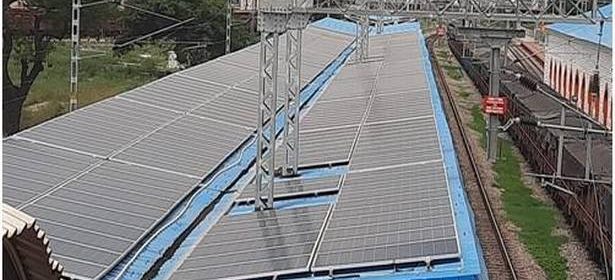India adds record-high rooftop solar capacity of 521 MW in April-June

The lockdowns were very targeted, and the industry was well prepared this time around, which minimised the effect on installation activity.
India has added 521 MW of rooftop solar capacity in April-June this year, which is the highest capacity installed in a quarter, according to Mercom India report.
India added 521 megawatts (MW) of rooftop solar capacity in the second quarter (Q2) of the calendar year (CY) 2021, a 53% increase quarter-on-quarter (QoQ) compared to 341 MW installed in Q1 2021 (January-March), said Mercom India Research’s newly released Mercom India Rooftop Solar Market Report Q2 2021.
Rooftop solar installations were up 517% year-over-year (YoY) compared to the 85 MW installed in Q2 2020 (April-June 2020).
Rooftop solar capacity additions in India in Q2 2021 (April-June) were the highest in a quarter.
As per the report, installations were significantly higher than the previous quarter despite the second wave of the COVID-19 and related State lockdowns.
The lockdowns were very targeted, and the industry was well prepared this time around, which minimised the effect on installation activity.
This quarter’s installation numbers were skewed due to a large amount of residential rooftop solar capacity commissioned in Gujarat, it stated.
In 1H 2021 (January to June), 862 MW of rooftop solar capacity was added, a 210% increase compared to the same period of last year, the report stated.
Installations in 1H have already surpassed the total rooftop solar capacity installed in all of 2020 (719 MW) when the market was severely affected by COVID-19 lockdowns.
If the market has no other adverse COVID-related events for the rest of the year, 2021 could be the second-largest year for rooftop solar after 2018, it added.
“The rooftop solar segment had a strong quarter, and demand is up. Finalising the net metering cap at 500 KW has removed uncertainty for installers and paved the way for future growth.”
“However, haphazard rooftop solar policies across States and a lack of support from distribution companies are holding back the sector from realising its true potential to bring in new investment, create jobs and drive the clean energy economy forward,” said Raj Prabhu, CEO of Mercom Capital Group.
Considering the industry fared much better during the second wave of COVID-19, Mercom is raising its forecast significantly this year.
According to the report, at the end of Q2 2021, cumulative rooftop solar installations reached 6.1 GW.
In Q2 2021, more than 130 MW of rooftop solar projects were tendered, a 69 % QoQ decrease, but a 46% YoY increase, it stated.
Major rooftop solar tenders issued this quarter came from Madhya Pradesh Urja Vikas Nigam, Jharkhand Bijli Vitran Nigam, Haryana Renewable Energy Development Agency, and West Bengal Renewable Energy Development Agency, it added.
In Q2 2021, the majority of the rooftop solar installations were in Gujarat, accounting for about 55% of installed capacity this quarter. Maharashtra and Haryana rounded off the top three States for rooftop solar in Q2 2021.
The industry witnessed a surge of demand from commercial and industrial (C&I) consumers even during the lockdown from the second wave of COVID-19. The first half of the year could have been much stronger if not for the uncertainty around net metering regulations. With regulatory certainty in place, demand is expected to pick up, though with smaller-sized installations, noted the report.
According to the report, in Q2, average rooftop solar system costs increased 3% to ₹39.1 million/MW compared to ₹ 38 million/MW in Q1 2021. System costs have been rising since Q3 2020 due to increasing costs led by modules and other components, coupled with raw material shortages. Solar modules still make up for the majority of rooftop solar costs.
Even with rising costs, consumers are realising that solar is still cheaper than retail power tariffs, it added.
There is significant concern over increasing costs compared to the prices quoted under state empanelment auctions. Failure or success of these installations will have a considerable impact on the future of the residential rooftop solar segment, noted the report.
Source: Read Full Article
